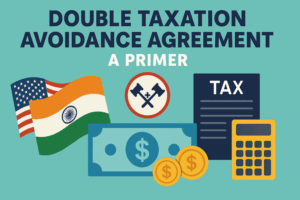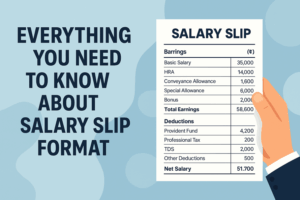
If you want to grow your wealth over time, PPF and SIPs in mutual funds can help you do so in a disciplined manner. For investors who want to accumulate a healthy corpus over the next 15 years, Public Provident Fund and SIPs are often the go-to investment choices. They help you grow your savings slowly but steadily over time. However, you should understand their characteristics and returns before investing in SIPs or PPFs.
SIP lets you invest in things related to the stock market and earn more from your money over time. But PPF is a stable way to save since it has fixed guaranteed returns. Here is a look at how SIP vs PPF stack up against each other so you can pick the one that fits your needs and risk tolerance.
What is SIP?
Most people prefer investing in mutual funds through Systematic Investment Plans, commonly known as SIPs. An SIP means regularly investing a small amount in mutual funds. Like recurring deposits, a SIP investment requires you to schedule the same monthly investment amount to be automatically put into the market.
The SIP route could be helpful for stock and mutual fund investments as it reduces investment risks. By investing in SIPs, individuals build a strong habit of saving and preparing for their future needs. In 2023, 5.06 million millennials signed up for SIPs.
Who should invest in SIPs?
SIPs might not be right for everyone. Deciding if they work for you relies on how much risk you are comfortable with and what you are trying to achieve with your investment. SIP can help you grow your money over time, but only if you are comfortable with more risk and know how the stock market works. Investors who plan to hold their investments for the long term can usually get more benefits from them.
The longer you keep your investments, the more you stand to benefit from rupee cost averaging and compounding. These can really help your money grow over time. If you have some experience in buying stocks and feel comfortable picking which ones to choose, then a SIP could be a good option for you.
What are the benefits of SIP?
When you apply for an SIP plan, your bank will automatically deduct the installment amount from your account. Then, it will place it in your purchased mutual funds following the set time frame. Based on how the market performs, your SIP plan in India will give you additional units for each payment. If you cannot decide which one will fit your needs, SIP vs. PPF, learn about the benefits of SIPs.
• Rupee Cost Averaging
Rupee cost averaging is the practice of buying more units when a fund’s NAV is less and fewer units when the NAV is higher. SIP helps to bring down the average cost when buying mutual fund units during the SIP duration.
• Long-Term Benefits
When you invest for a long time, SIP works in your favor. As days turn into years, the money you invest will keep growing. Investing for a longer tenure gives your money more time to accrue growth. Also, it helps people plan for spending in the future on retirement, studies, or purchasing a home.
• Convenience
It only takes a little effort to set up an SIP. You can link your SIP to your bank account. The amount is taken out of your bank account automatically every month, making it convenient for people to save money every month.
• Flexibility
You can open a SIP account with as little as ₹500 each month. If you want to change the invested amount, it allows you to do so whenever needed. You have the option to pause or stop your SIP without any charges. This allows you to manage your investments freely.
• Cost-effective
SIP is suitable even if you have only a small amount of money to invest. It suits everyone, especially beginners. You do not have to predict when the market will rise or fall. Also, you regularly put in a little money for investing. This way, most people can afford to invest with less stress.
• Diversification
With SIP, you can invest in several mutual funds, distributing your money to several sectors and companies. Diversification reduces risk, and the strong performance of others balances underperformance in one industry.
• Professional Management
As mutual funds are managed professionally, investors can maintain discipline when investing. It supports expert choices in investing and ways to manage risks. Consistent investments increase the value of your assets in the long run.
What is PPF?
PPF is a scheme that allows individuals to invest their money over time and get fairly steady and high returns. The main reason people opt for a PPF account is to keep their principal safe. The applicant’s account with PPF is activated when the PPF is opened.
Their money is deposited there every month, and the interest is calculated and accumulated. Those who invest in PPF can avail of tax benefits up to Rs. 1,50,000 under Section 80C of the Income Tax Act, which helps lower their tax bill.
Who should invest in PPF?
People who like to take a little risk with their investments should invest in a public provident fund scheme. Since the government approves this plan, it guarantees returns to support the financial needs of most Indians. What’s more, your invested funds in the PPF account are not dependent on market changes.
Investors can also use the public provident fund to diversify their finances and investments. During downturns, PPF has a stable track record of delivering returns.
What are the benefits of investing in PPF?
For those who prefer a safe investment avenue, PPF is a great choice. While how much money you make from these investments can vary, it is fairly stable. Moreover, putting money in PPF can fetch you several advantages as mentioned below.
• Low-Risk Investment with Guaranteed Returns
PPF is a scheme backed by the government of India. It is a secure way to save your funds. The investor need not worry about the market. Your money stays protected. A fixed return is declared for each quarter.
• Tax Benefits
PPF offers great tax advantages. You can save up to ₹1.5 lakh on taxes annually under Section 80C. This is what makes PPF more popular compared to various investment choices. This method offers great benefits if you have to choose SIP vs PPF.
• Affordable Investment with Good Returns
You are welcome to invest in PPF with only ₹500 a year. Generally, PPF interest rates are set at a higher level than fixed deposits, which explains why people choose it to save for the future.
• Loan and Withdrawal Options
Between the 3rd and 6th year of the PPF, you can avail a loan from your PPF account. This helps during emergencies. Beginning in the 7th year, you can withdraw some funds. Which means it becomes easily accessible when the need arises.
• Flexible Tenure
PPF has a 15-year lock-in period. You have the option to renew it every 5 years. Subscription does not require you to pay each month. You can make investments at any time of the year. Here, SIP vs PPF is different since SIP does not have a lock-in.
What are the key differences between SIP and PPF?
SIP and PPF are two methods that Indians often use for investing their money. They are about planning money but have different forms and features. The table below outlines a comparison of SIP vs PPF.
| Features | SIP | PPF |
| Investment Type | Mutual funds are linked to the market. | Government-backed savings plan. Not market-linked |
| Level of Risk | Varies according to market performance. | Almost nil |
| Lock-in Time | None, except for the three-year ELSS funds. | 15 years |
| Returns | Variable and driven by the market. | Fixed, with quarterly announcements. |
| Liquidity | High, subject to withdrawal at any time (conditions apply). | Low, and after five years, partial withdrawals are permitted. |
| Tax Advantages | Available through ELSS funds under Section 80C. | Available under Section 80C. |
| Minimum investment | Depends on the mutual fund scheme | ₹500 annually |
| Optimal Investment | No upper limit | ₹1.5 lakh annually |
While SIP and PPF serve different purposes, they also provide various features for people seeking different financial goals. The amount you can invest in an SIP can vary. As PPF has a fixed interest rate, a long lock-up period, and strict rules about withdrawals, it is more suitable for those wanting to save for a long time. By assessing risk, time, and rewards between SIP vs PPF, individuals can decide on the best investment fit.
FAQs
Q. Which is better, PPF or SIP?
SIPs from mutual funds can give you higher returns than PPF, although PPF offers better security and tax savings. You need to analyze SIP vs PPF. The best results might be gained by using a mix of both methods.
Q. Is anything better than PPF?
Since ELSS funds invest in the stock market, they might fetch better returns than PPF or regular fixed-return options. Risks from market movements and possible fluctuations are always present with ELSS funds, and the returns are not guaranteed.
Q. How much is 1 lakh per year in PPF?
Every year, putting Rs 1.5 lakh in a PPF account will accumulate a corpus of Rs 40.68 lakh when the account matures after 15 years. At the same time, making more deposits or adding extra payments to your savings can also make your money grow faster.
Q. Which is better than the PPF scheme?
Though PPF offers stable and steady growth, SIP generates potentially higher returns over a long time. However, it must be handled carefully as it is exposed to market fluctuations.







